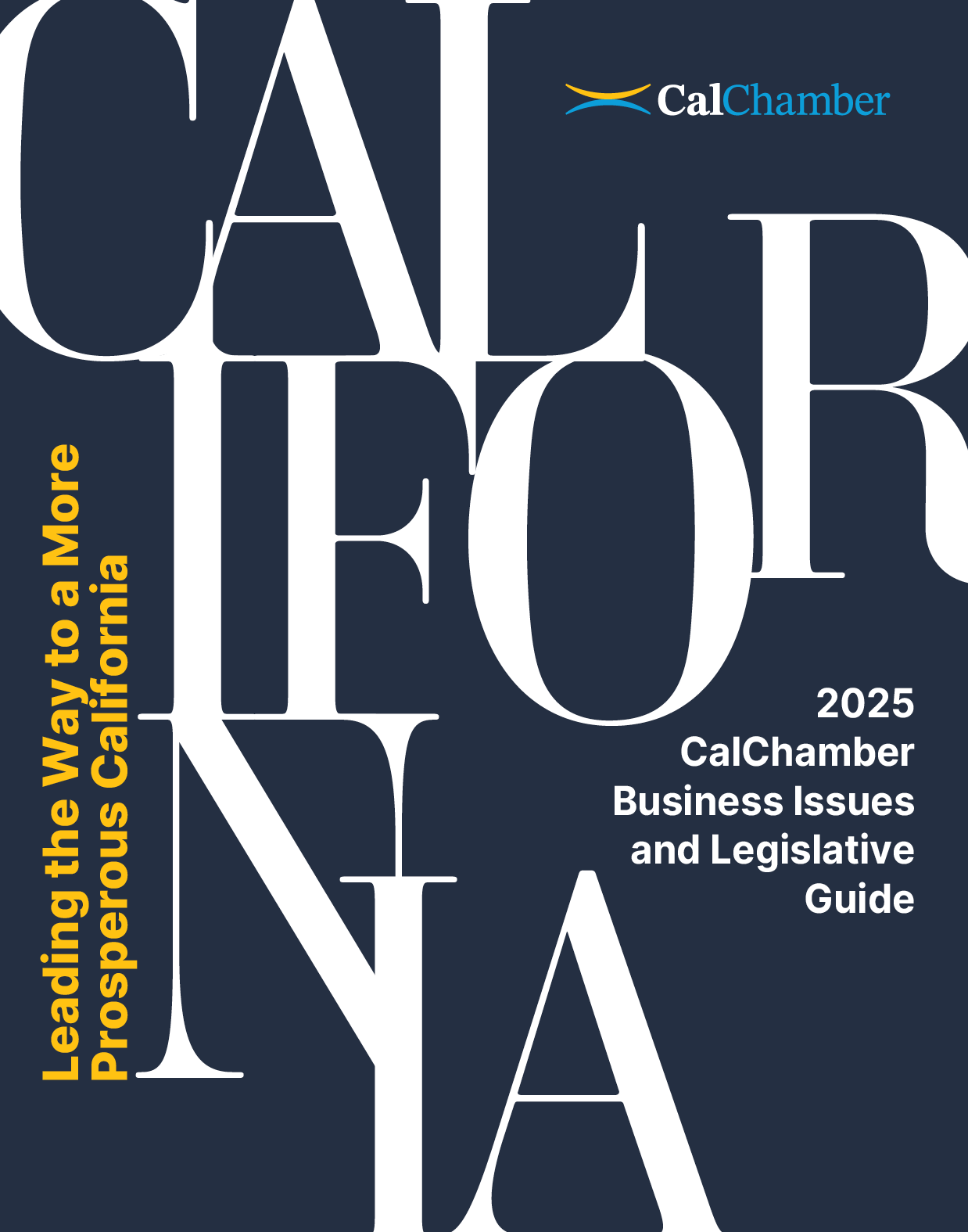
Business Issues and Legislative Guide

Public policies can have a profound effect on whether businesses succeed. Accordingly, this issues guide highlights how state policy makers can be part of Leading the Way to a More Prosperous California.
Affordability issues in areas ranging from housing to energy and taxation threaten progress on any prosperity agenda. This guide offers sensible, workable ideas to move forward.
Leading the Way to a More Prosperous California
Leading the Way to a More Prosperous California
See the links below for analyses of state and federal issues the CalChamber considers crucial to Leading the Way to a More Prosperous California.
2025 Issues Guide
Antitrust
Education
Health Care
Housing
International Trade
Labor and Employment
Privacy and Cybersecurity
Product Regulation/Recycling
Proposition 65
Taxation
Tourism
Unemployment Insurance
Water
Workplace Safety
Campaign for California Jobs
About CalChamber
Candidate Recruitment/Development
Legislative Guide
- Legislative Guide
(includes: Legislative Process, How to Write Effective Lobbying Letter, Guide to Reading a Bill, California Government Glossary, California State Government — The Executive Branch)
Issue-Specific Pages